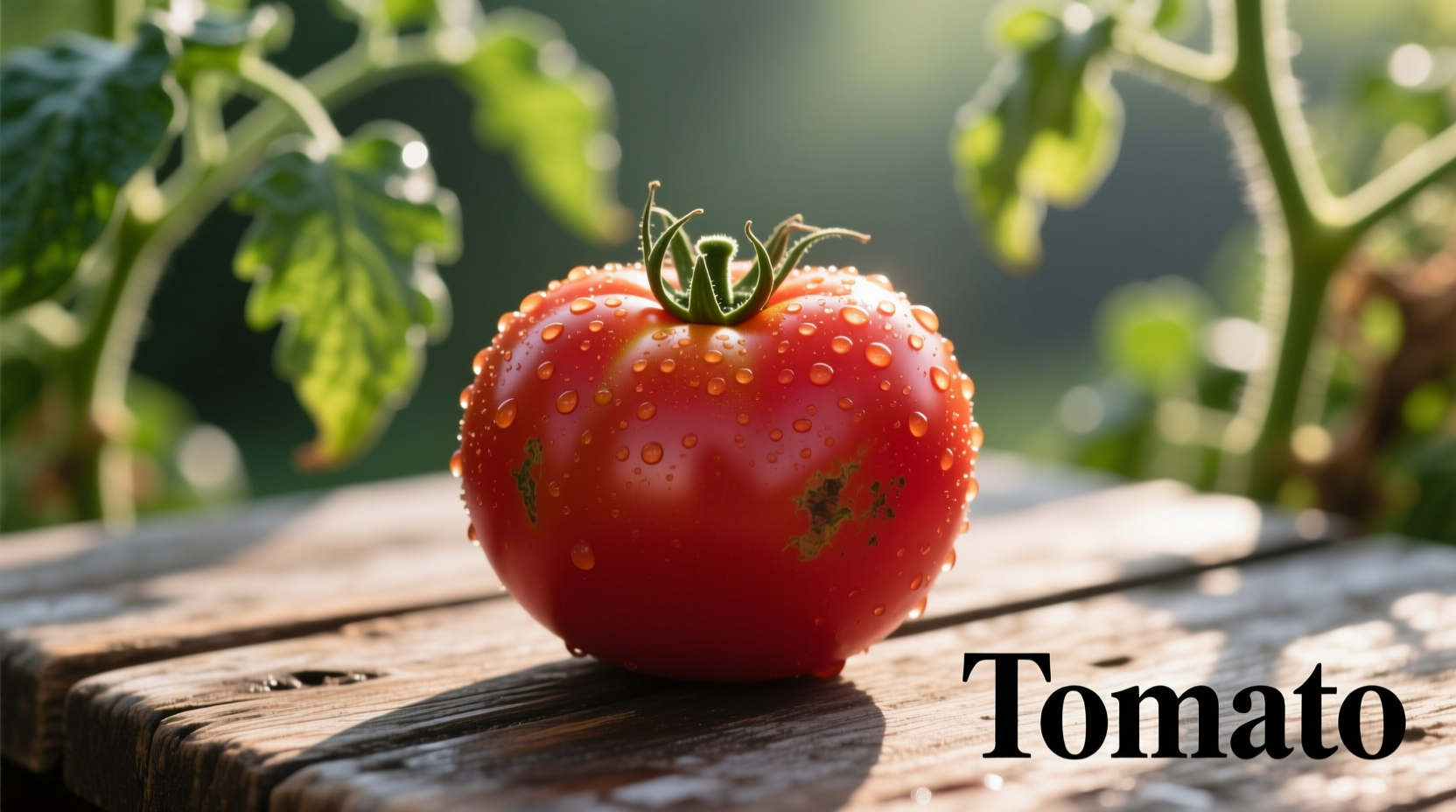Discover how to accurately identify 15+ tomato varieties through visual characteristics including color, shape, size, and texture patterns. This comprehensive visual reference guide provides practical identification techniques used by professional chefs and gardeners, with scientifically accurate descriptions of each variety's distinctive appearance.
When searching for tomato picture references, you need more than just random images—you require a systematic visual identification system that connects appearance to culinary applications and growing characteristics. Professional food photographers and horticulturists use specific visual markers to distinguish between varieties, and understanding these markers transforms how you select, use, and photograph tomatoes.
Why Visual Identification Matters for Tomato Selection
Tomato appearance directly correlates with flavor profile, texture, and best culinary uses. Unlike many fruits, tomatoes exhibit extraordinary visual diversity while maintaining the same botanical classification (Solanum lycopersicum). This visual variety isn't merely aesthetic—it signals important functional differences that impact your cooking and gardening results.
| Tomato Variety | Distinctive Visual Markers | Primary Culinary Use | Season Availability |
|---|---|---|---|
| Beefsteak | Large, ribbed shoulders, irregular shape, deep red to pink | Sandwiches, slicing | Mid to late summer |
| Cherry | Small (1-2" diameter), perfectly spherical, bright red or yellow | Salads, snacking | Early to late summer |
| Heirloom | Irregular shapes, multi-color patterns (stripes, marbling) | Fresh preparations | Late summer |
| Roma | Oval shape, firm texture, deep red, few seed cavities | Sauces, canning | Midsummer |
Tomato Visual Identification System
Professional growers and chefs use a standardized visual assessment protocol when evaluating tomatoes. This system examines four critical visual characteristics that reliably indicate variety and quality.
Color Patterns That Reveal Tomato Varieties
Tomato color extends far beyond basic red. Understanding color gradients and patterns provides immediate identification clues:
- Solid red varieties (Roma, Celebrity) show uniform color with minimal green shoulders
- Bicolor patterns (most heirlooms) display distinctive striping or marbling
- Yellow/orange varieties (Sun Gold, Orange Grape) maintain consistent warm tones without red undertones
- Purple/black varieties (Black Krim, Cherokee Purple) show deep anthocyanin pigmentation concentrated on shoulders

Shape and Size Characteristics
Tomato morphology follows predictable patterns by variety:
- Globe tomatoes (most commercial varieties) maintain near-perfect spherical shape
- Oblong varieties (Roma, San Marzano) feature distinctive oval shape ideal for processing
- Ribbed types (Beefsteak) show pronounced shoulder segmentation
- Irregular heirlooms often display unique lobing and asymmetrical growth patterns
Historical Development of Tomato Varieties
Understanding the evolution of tomato appearance helps contextualize modern visual characteristics. This timeline shows how selective breeding has expanded visual diversity:
| Time Period | Visual Characteristics | Historical Significance |
|---|---|---|
| Pre-1500s | Small, yellow/orange, berry-sized | Native to South America; first cultivated varieties resembled modern currant tomatoes |
| 1800s | Larger, red varieties developed | Selective breeding in Europe produced first red tomatoes; USDA began formal variety registration in 1835 |
| Early 1900s | Standardized shapes and colors | Commercial breeding prioritized uniform appearance for shipping; first hybrid varieties introduced |
| Modern Era | Extreme visual diversity | Heirloom revival and specialty breeding created hundreds of distinctive visual varieties |
Practical Applications of Tomato Visual Identification
Knowing how to identify tomatoes by appearance directly impacts your culinary results and gardening success. Different visual characteristics indicate specific functional properties.
Culinary Decision-Making Based on Visual Cues
Professional chefs examine tomatoes visually before selecting for specific dishes:
- For sauces and canning: Look for oval shapes, thick walls, and minimal seed cavities (Roma types)
- For fresh slicing: Choose large, uniformly red varieties with firm but yielding texture
- For salads: Select smaller varieties with high color saturation and glossy skin
- For gourmet presentations: Use multi-colored heirlooms with distinctive visual patterns
Gardening Selection Based on Visual Characteristics
Home gardeners can predict plant performance through visual markers:
- Determinate varieties typically produce more uniformly shaped fruit in concentrated harvest periods
- Indeterminate types often show greater size variation and irregular shapes throughout the season
- Disease resistance sometimes correlates with specific skin textures and thickness
- Climate adaptation can be inferred from color intensity and ripening patterns
Professional Tomato Photography Techniques
Capturing tomatoes effectively requires understanding how to showcase their distinctive visual characteristics. These techniques help highlight the features that distinguish varieties.
Lighting Strategies for Accurate Color Representation
Natural light between 9-11am provides optimal color rendering for tomato photography. Avoid direct midday sun which creates harsh highlights that obscure subtle color variations. For indoor photography, use daylight-balanced LED panels at 45-degree angles to reveal surface texture without glare.
Composition Approaches for Variety Identification
When photographing tomatoes for identification purposes:
- Include a neutral background (white or light gray) to prevent color distortion
- Capture multiple angles showing characteristic shape features
- Include scale reference (like a ruler or common object) for size context
- Photograph both whole fruit and cross-sections to show internal structure
Limitations of Visual Identification
While appearance provides valuable clues, certain limitations affect tomato identification accuracy:
- Environmental factors: Soil conditions and climate can alter expected appearance
- Ripeness stage: Color and texture change significantly during ripening process
- Hybrid varieties: May exhibit characteristics of multiple parent varieties
- Post-harvest handling: Storage conditions affect visual quality and appearance
For critical identification needs (like seed saving or disease diagnosis), visual assessment should be supplemented with genetic testing or expert consultation. The USDA Agricultural Research Service maintains reference collections for definitive variety identification when visual characteristics prove ambiguous.











 浙公网安备
33010002000092号
浙公网安备
33010002000092号 浙B2-20120091-4
浙B2-20120091-4